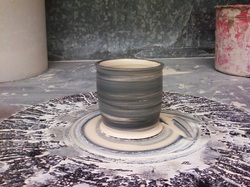
While this cylinder was still wet (right after I threw it), I used a brush to paint on blue stain. We'll see what happens!
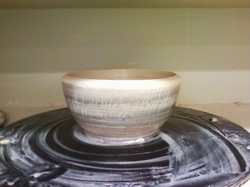
This bowl actually has both sodium silicate and stain on it. The sodium silicate didn't work too well though because I forgot to remove the water with a blue rib before applying it.
Last Saturday, I met a man selling ceramic bowls and mugs at the Holiday Market in Fall City. I picked his brain for his techniques and I was most intrigued by his use of sodium silicate. He explained that if you brush sodium silicate on the outside of a cylinder that has just been thrown, wait 5-10 minutes, and then widen the cylinder into a bowl, the outside gets cracked. Excited to try it out for myself, I got some aqueous sodium silicate from Mr. Hagler. The sodium silicate crystalizes and, when the bowl is widened, the sodium silicate cracks . The inside of the bowl is still smooth but the outside isn't. Here are my first attempts.
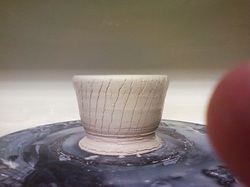
Sorry about the finger in the picture. This is my very first attempt. I left the sodium silicate on too long before widening this so I couldn't widen it much. I learned that I should throw a bowl that is only barely narrower than my I want it to be post-sodium silicate.
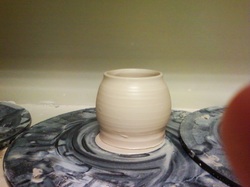
Here is the squat little base for my lidded project. I threw a lid the same day and the next day pulled a small ribbon of clay, which I attached to the lid for a handle. This project is porcelain and quite light due to thin walls and an extremely thin base.


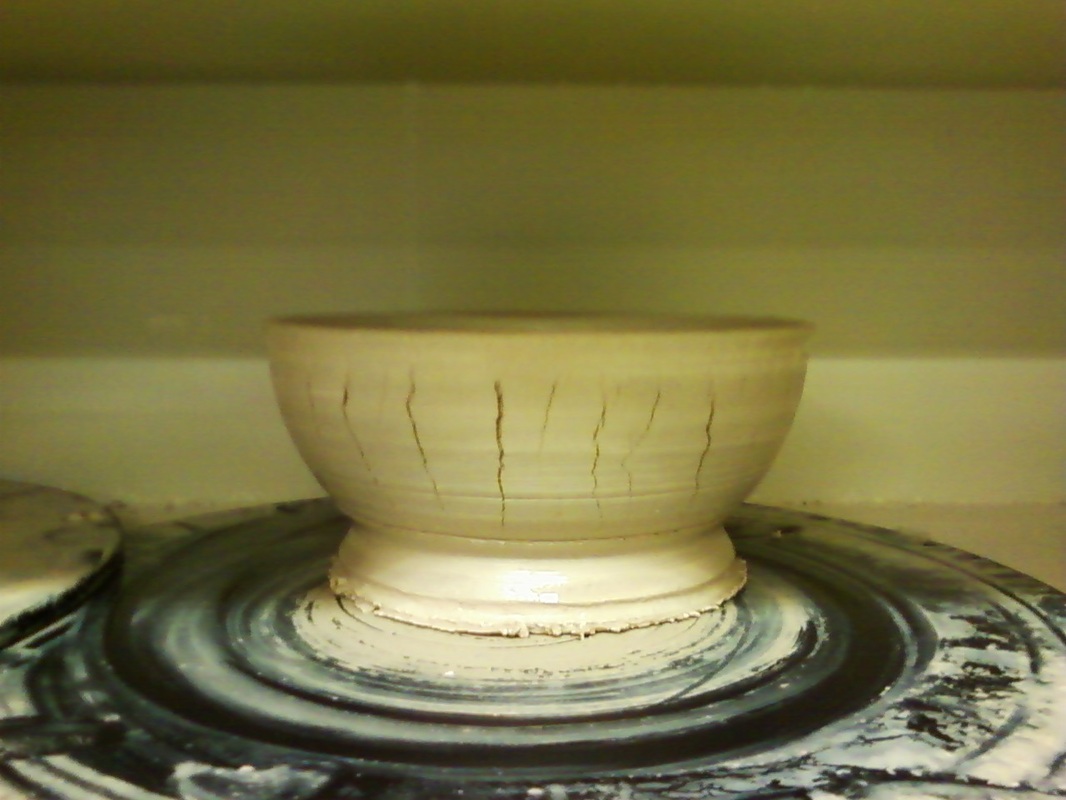


 RSS Feed
RSS Feed